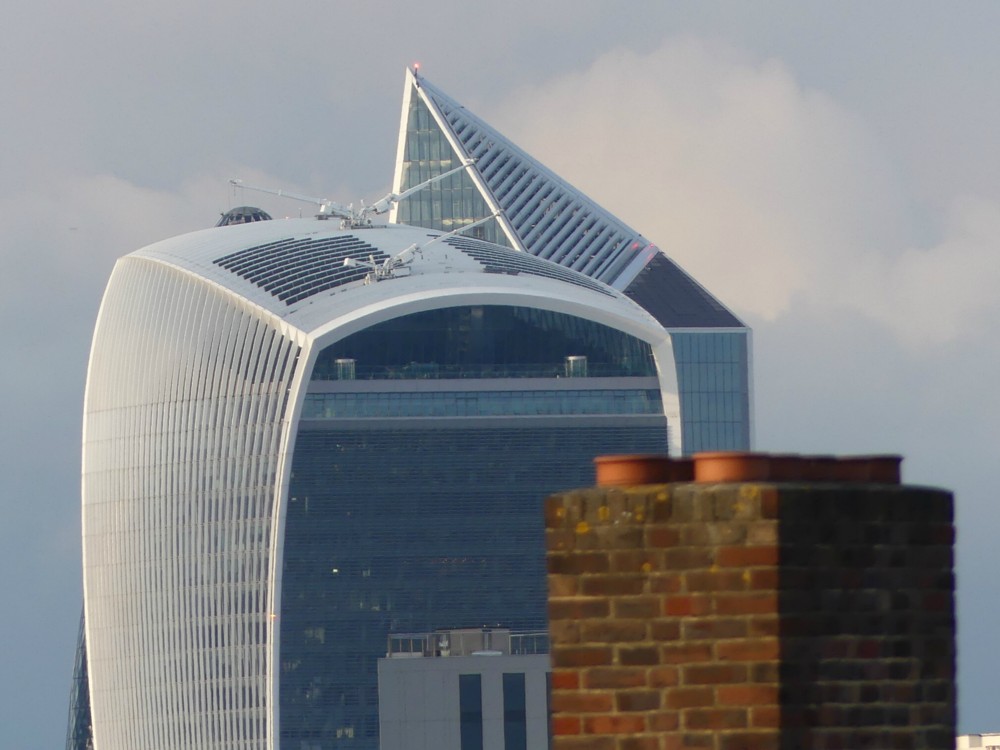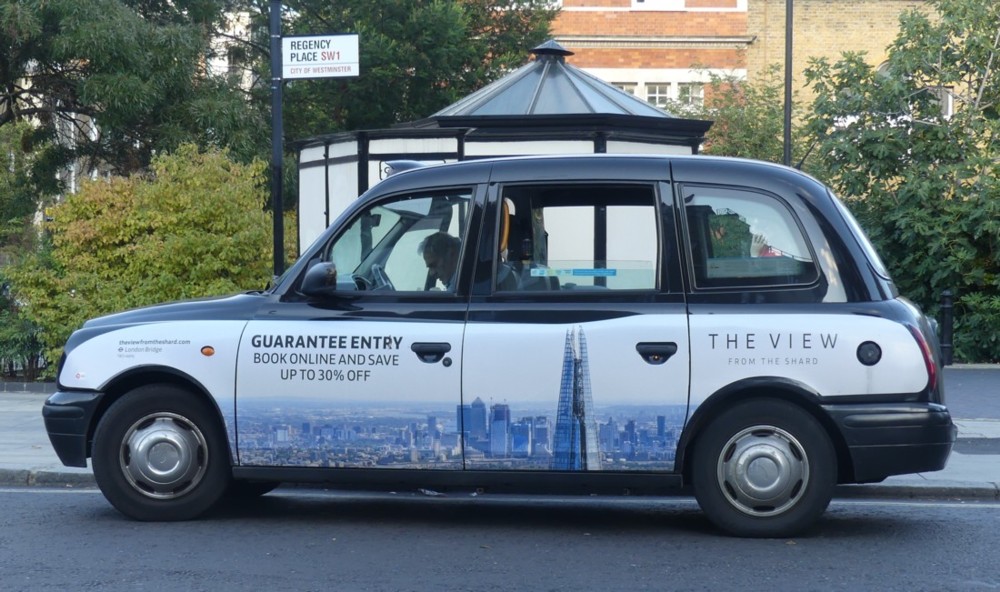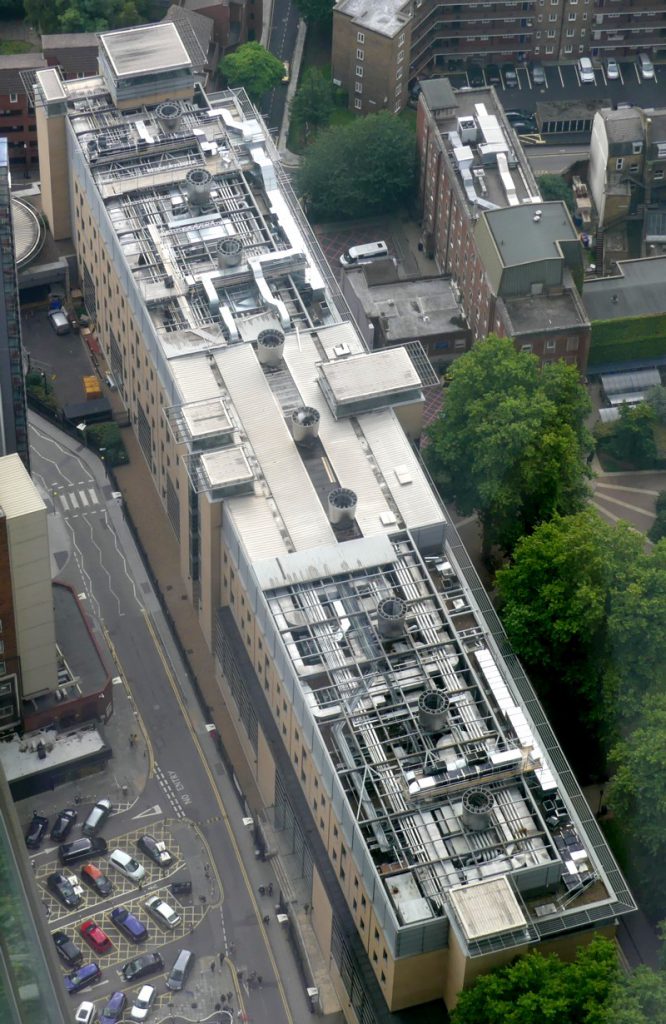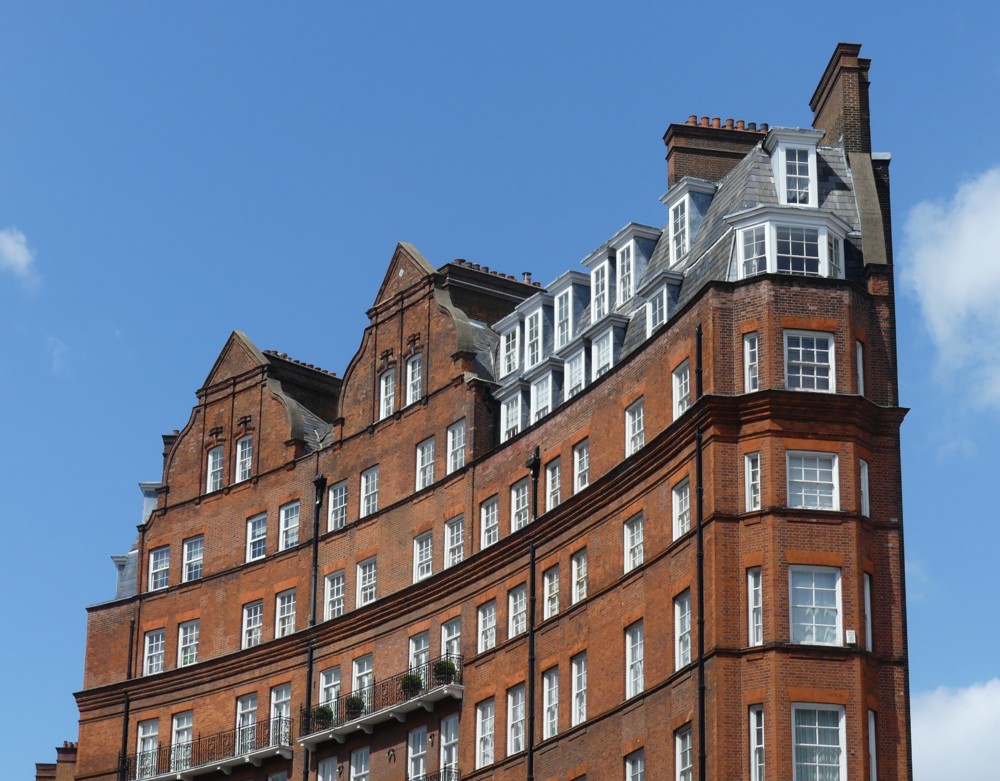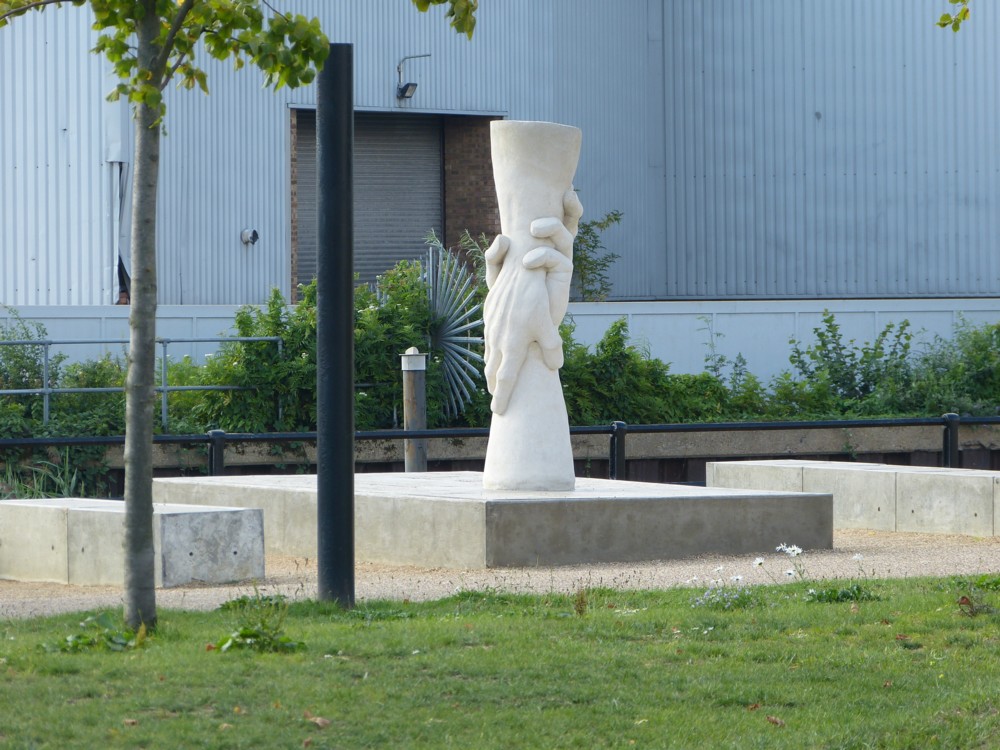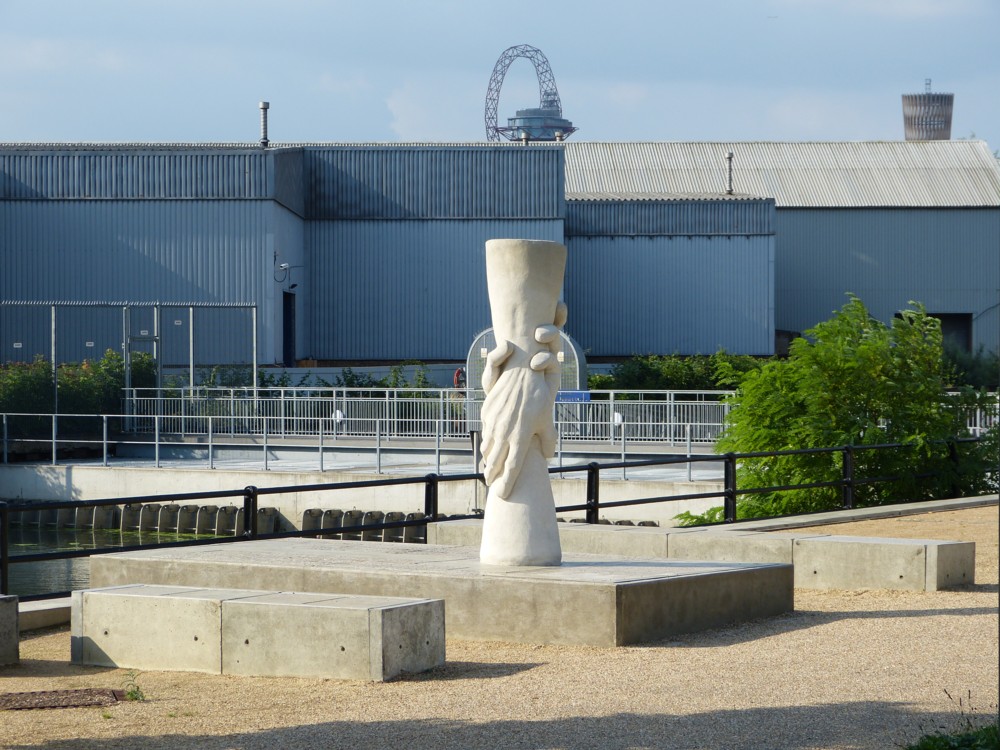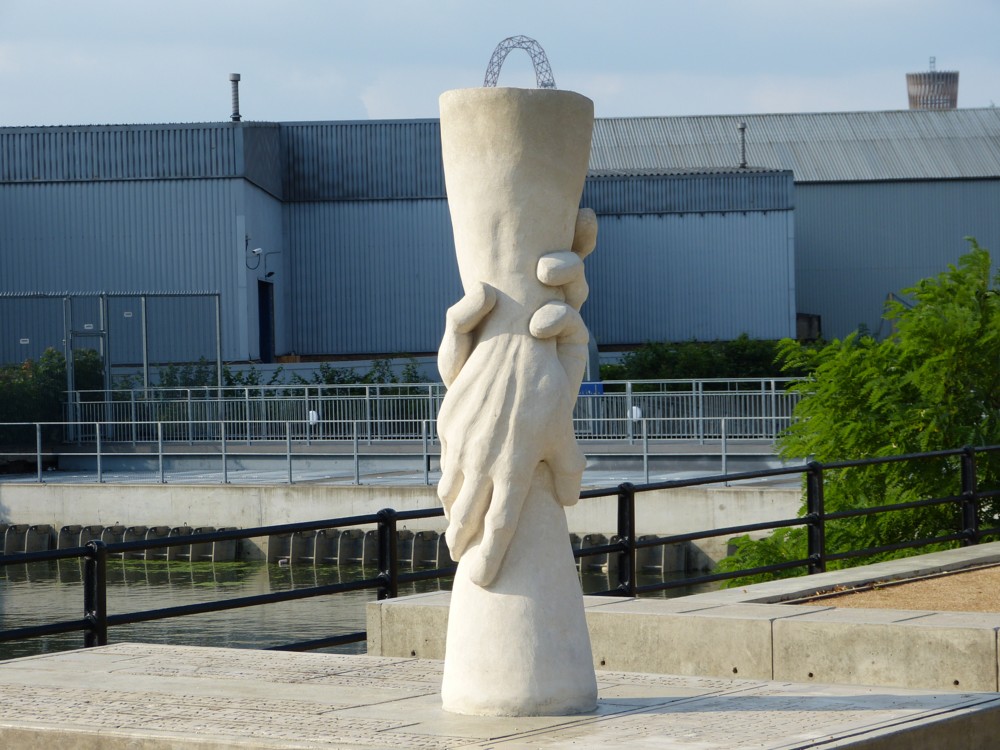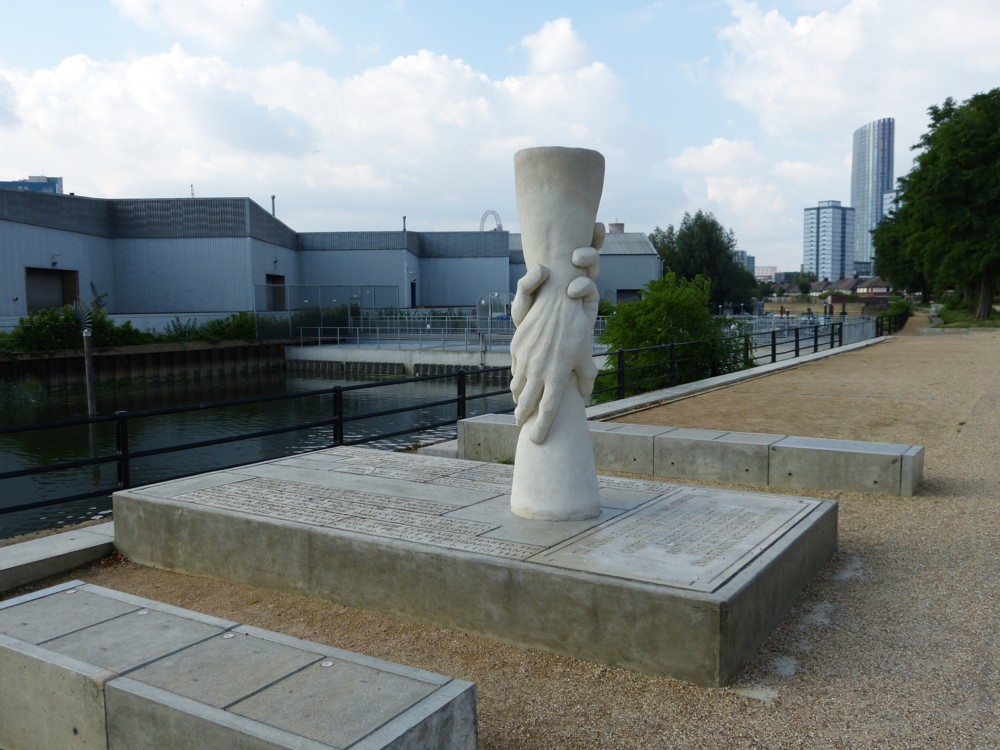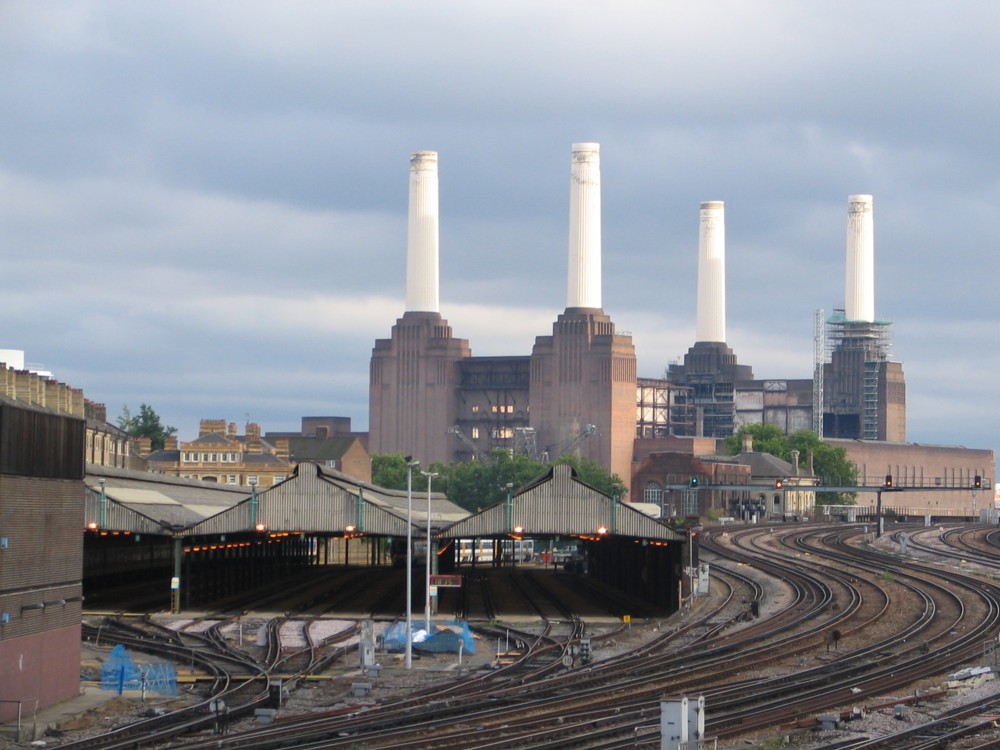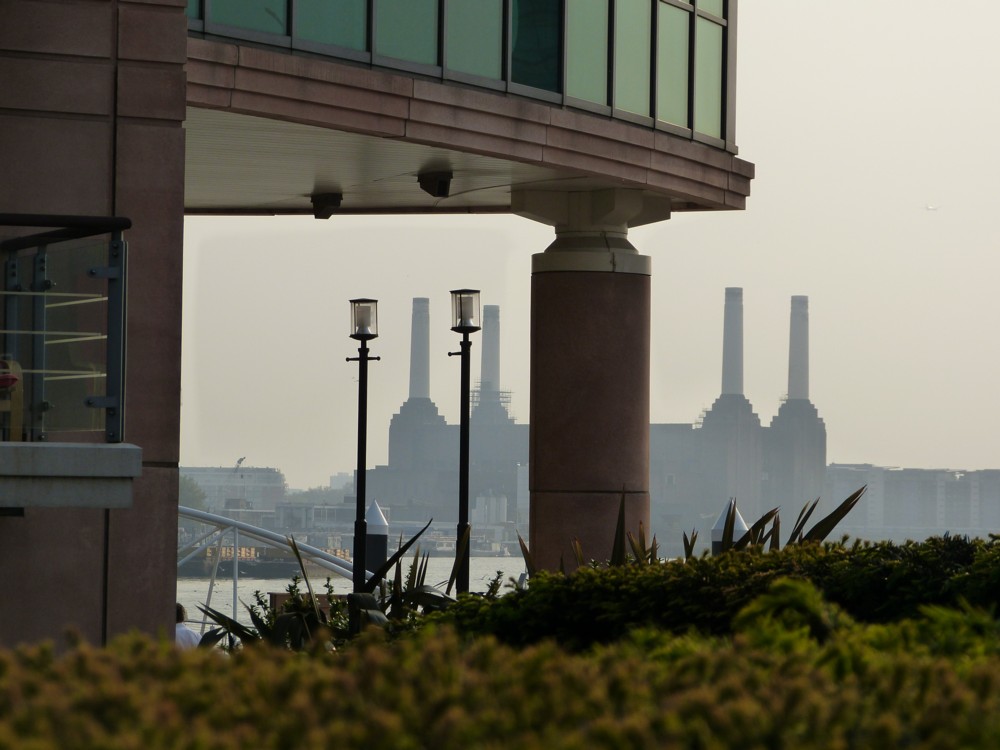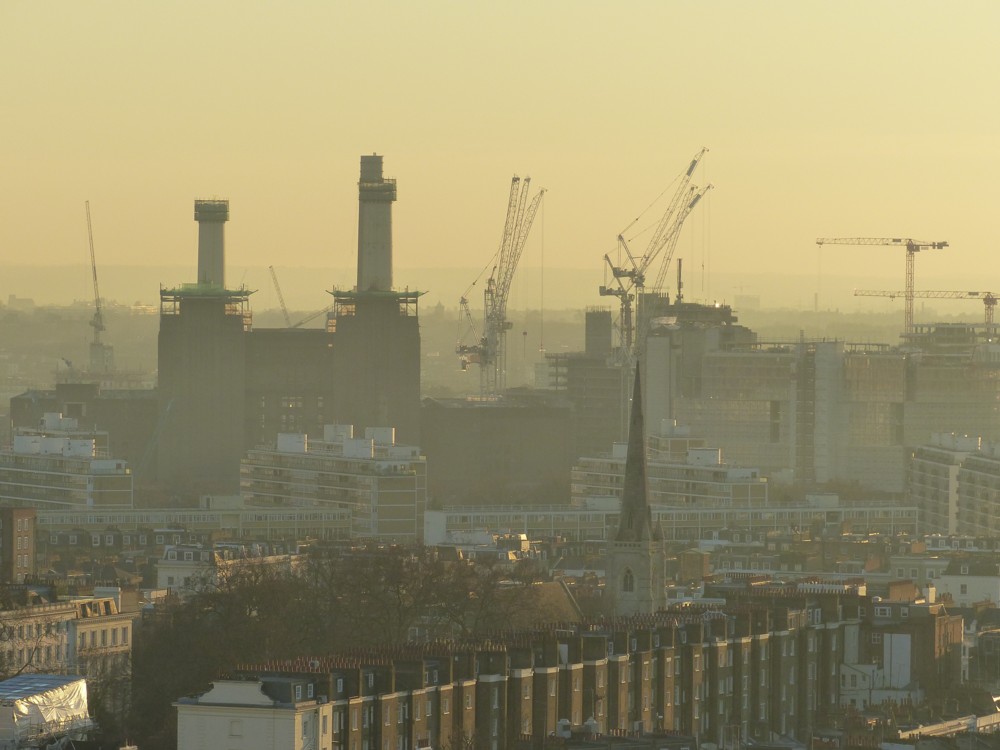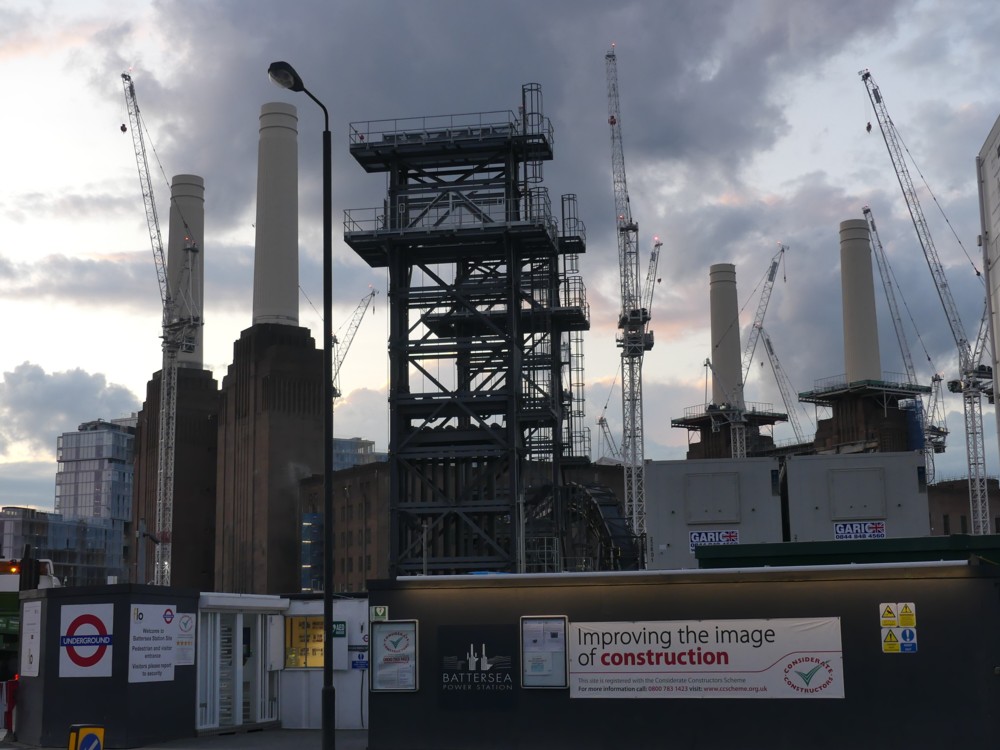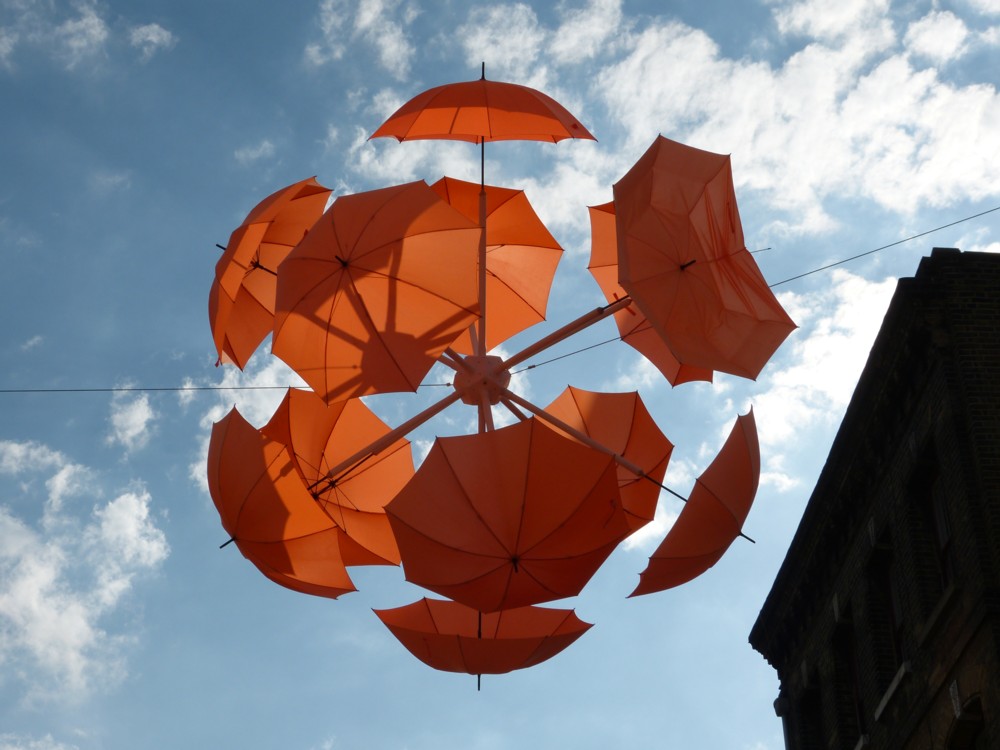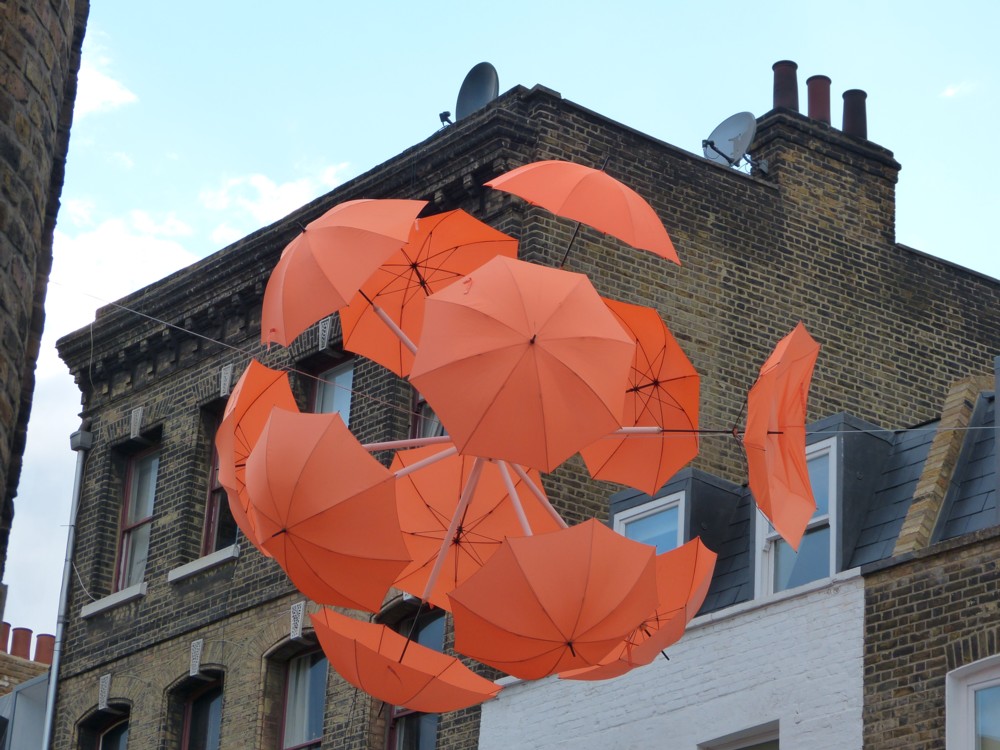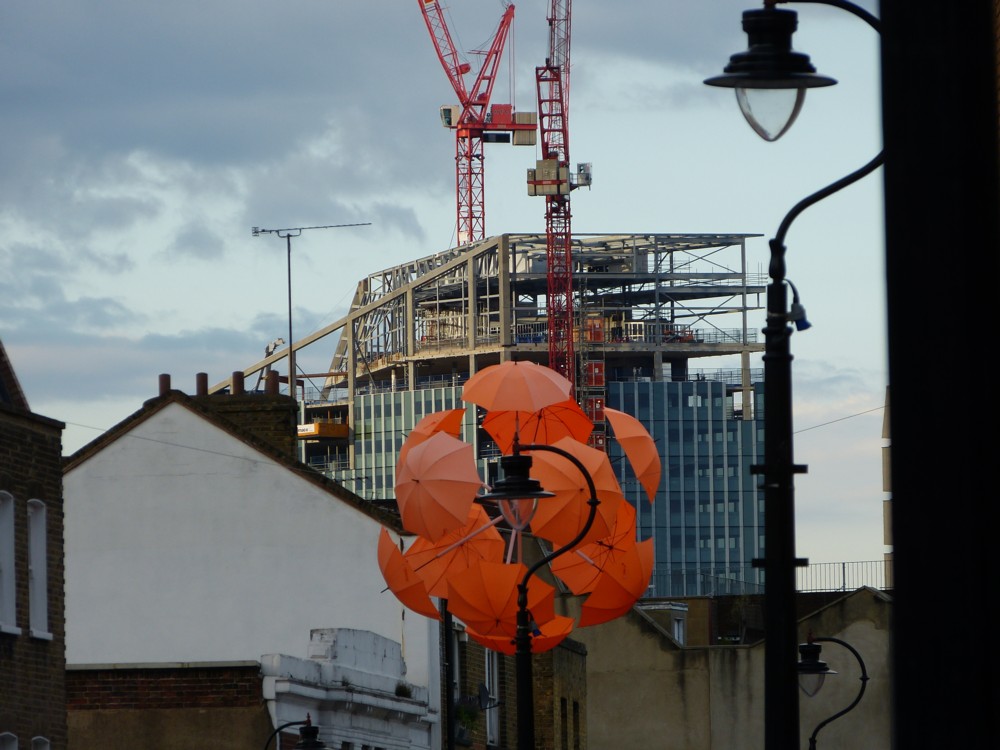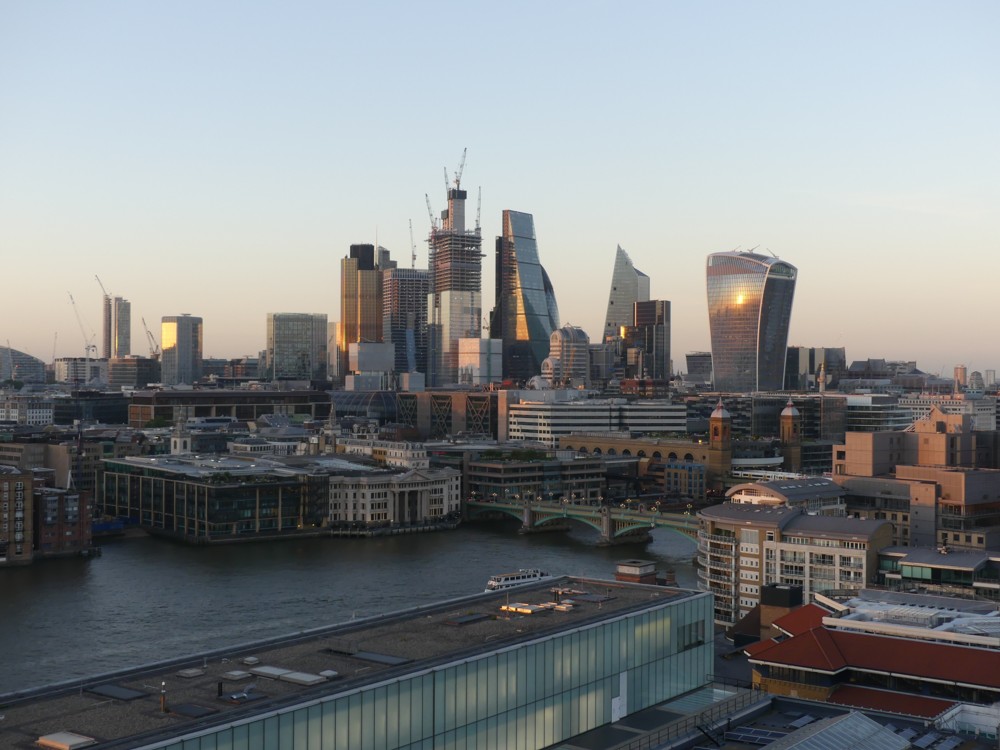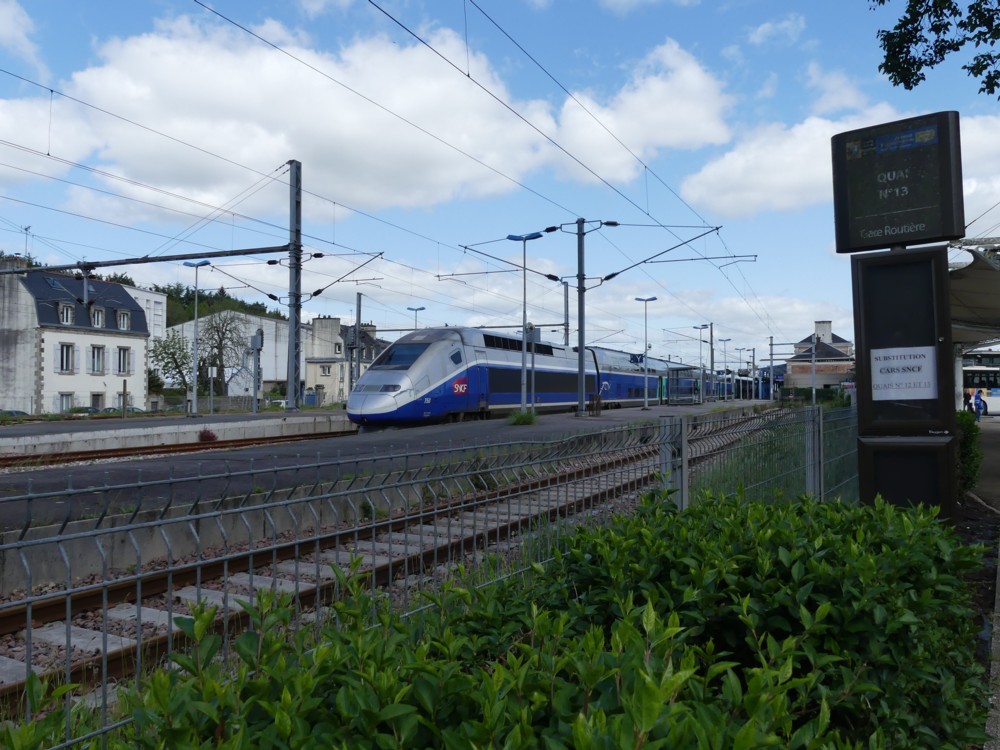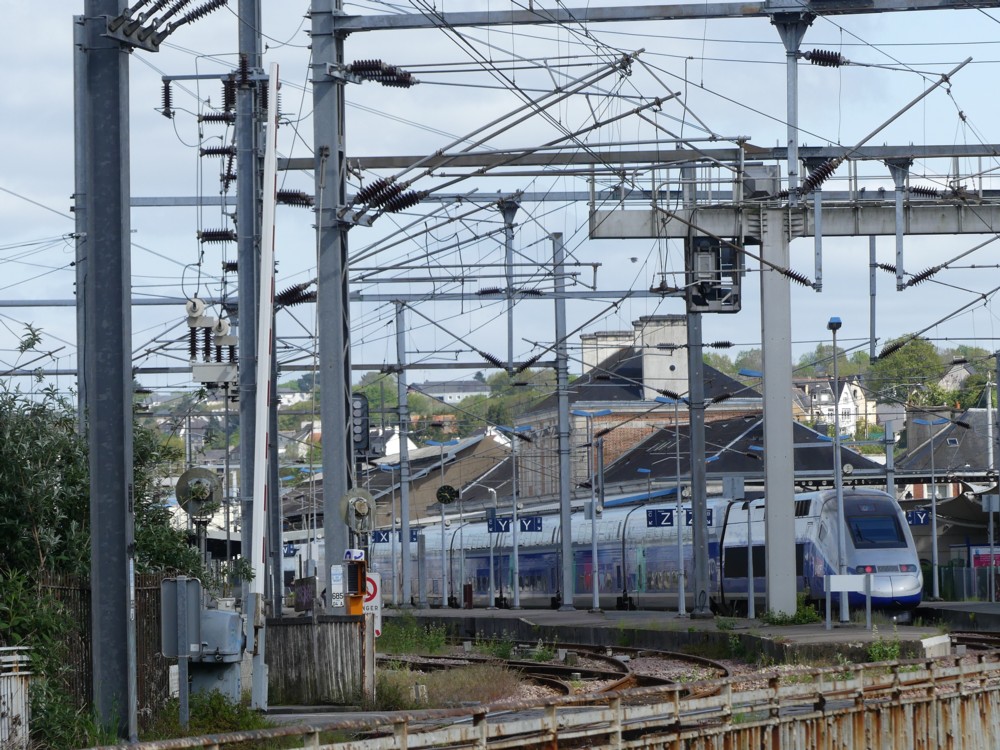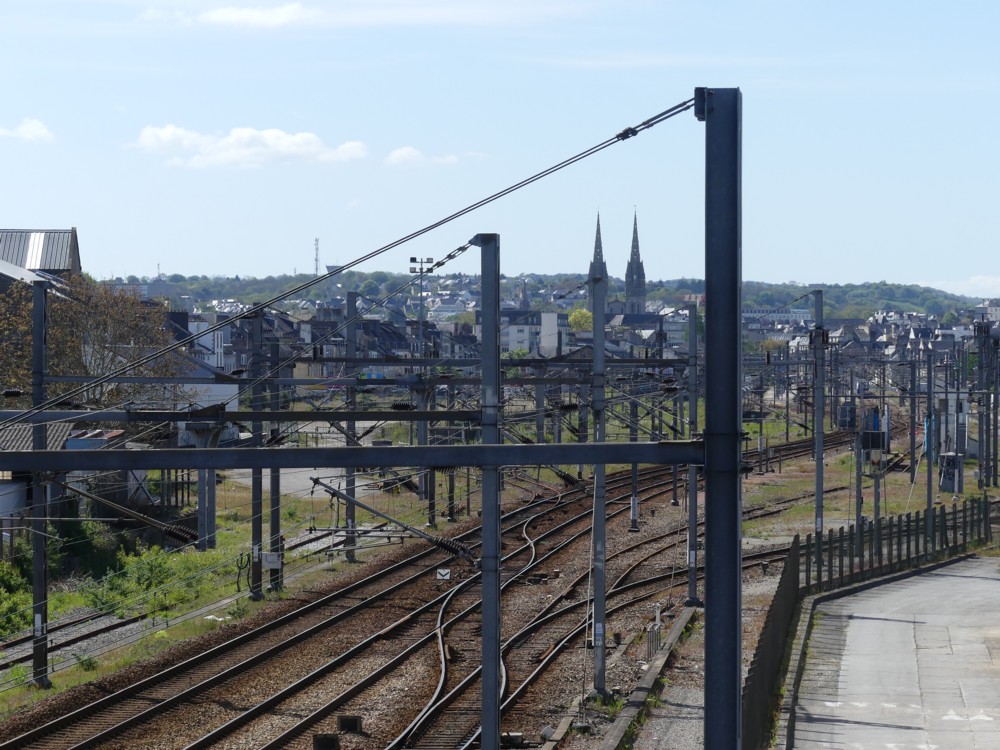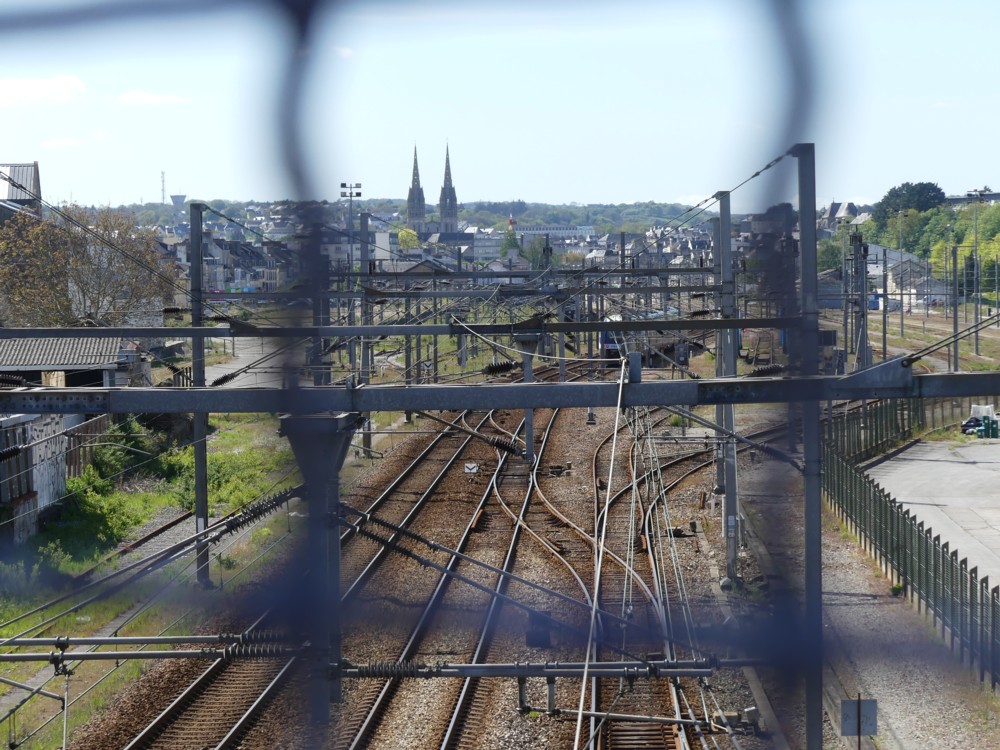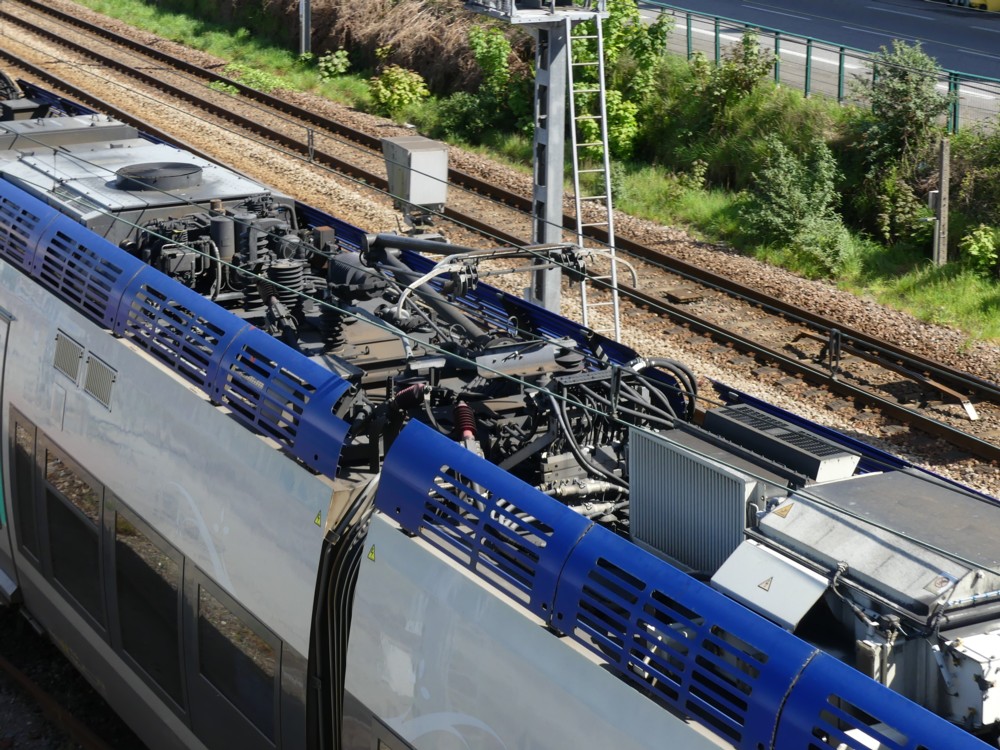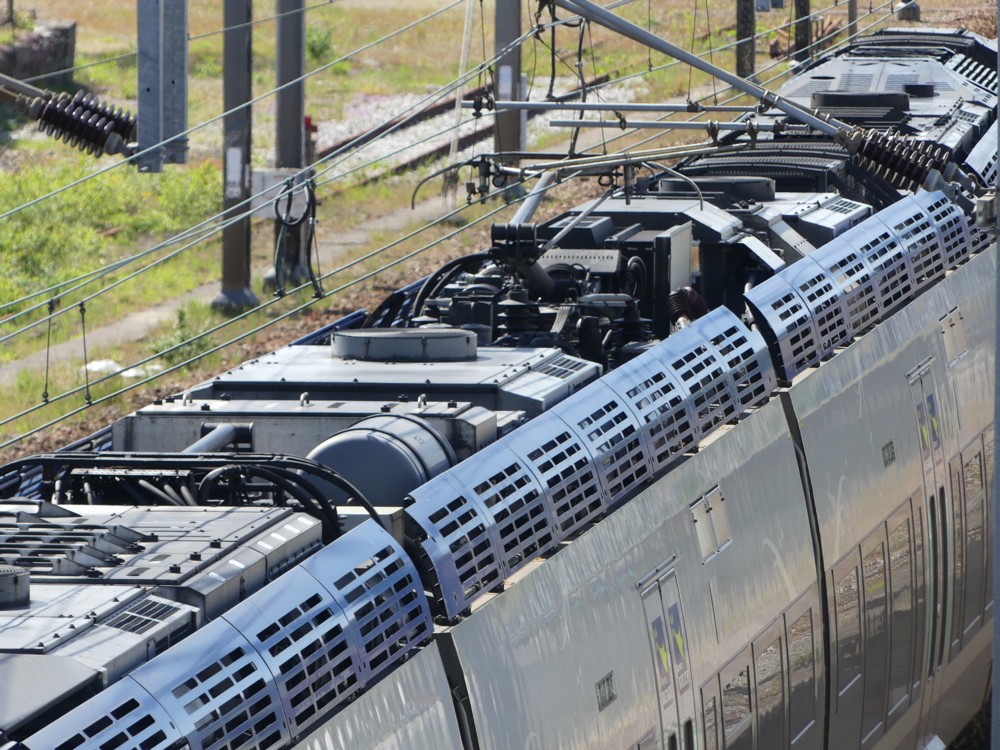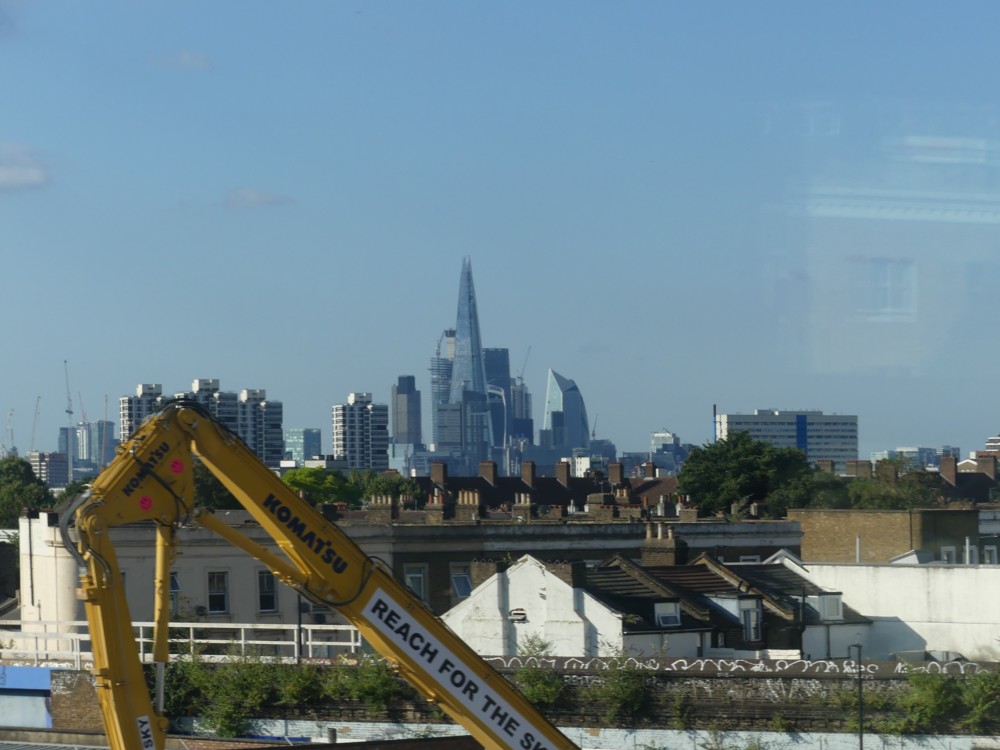6k has Flickred a wonderful little collection of photos he took on a recent expedition to France (he blogs about these here), of which this was one of my favourites:
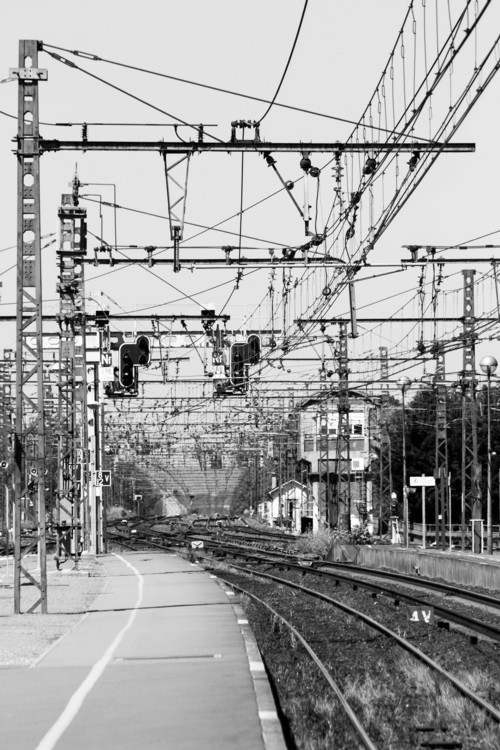
I particular like the extreme middle of this photo, which I have taken the liberty of cropping out and lightly sharpening:
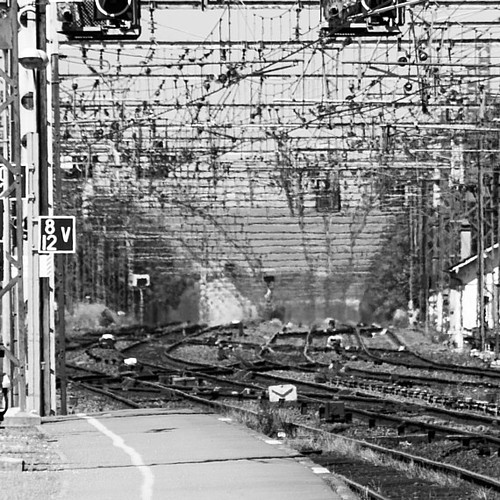
I love roof clutter. So it’s no surprise that I also love rail clutter. And France, so excellent at roof clutter, also does rail clutter exceptionally well.
Rail clutter embodies the exact same aesthetic contrast that roof clutter points to. One part of what you are looking at is obsessed over, aesthetically. The facade of a building is minutely contrived to look the way it should look. And then on top of it, you can just shove up anything you like, to let out smoke, receive and send signals and generally do stuff on the roof. Well, rail clutter is a lot like that. The trains (especially the trains in France (and especially the high speed trains in France)) are aesthetically magnificent, or at least are intended to be are are considered to be by their creators (and I happen to agree with them). Yet all around them is rail clutter, to feed the power into the trains, and this clutter is built in a totally functional manner, to do that job, no matter what kind of a jungle of mess that results in.
Let’s see what the photo-archive tells me about how this obsession played out on my own most recent expedition to France.
Here are two rail clutter photos, both featuring one of those beautiful trains, and both taken at Quimper railway station:
On the left, you can pretend that the rail clutter isn’t there, if you really want to. But on the right, the photo is photoed in such a way that you really can’t do that. Look at that clutter! I lined it all up with itself, just like 6k did in his rail clutter photo.
Here are a couple more photos of Quimper, taken from the footbridge over the main railway line off to the west of the city, right near where my hosts live, and in particular of the twin towers of Quimper Cathedral. These two photos point to that same rail clutter aesthetic contrast by shoving it next to a cathedral, instead of next to a train. But it’s the same point. The cathedral has been obsessed about aesthetically for centuries. The rail clutter just looks how it looks and to hell with that.
But for me, perhaps most interesting of all, here are a couple of photos which point to a closely related phenomenon, which is the matter of clutter actually on the top of the trains. That’s right. Trains also, themselves, have roof clutter on their roofs:
I remember noticing this phenomenon, pretty much for the first time (as in really noticing it), when I took this little clutch of photos. From that same footbridge in Quimper.
I have the feeling that British trains are not so roof cluttered. Memo to self: look into that. But that can wait. There’s been more than enough cluttertalk for this posting.

